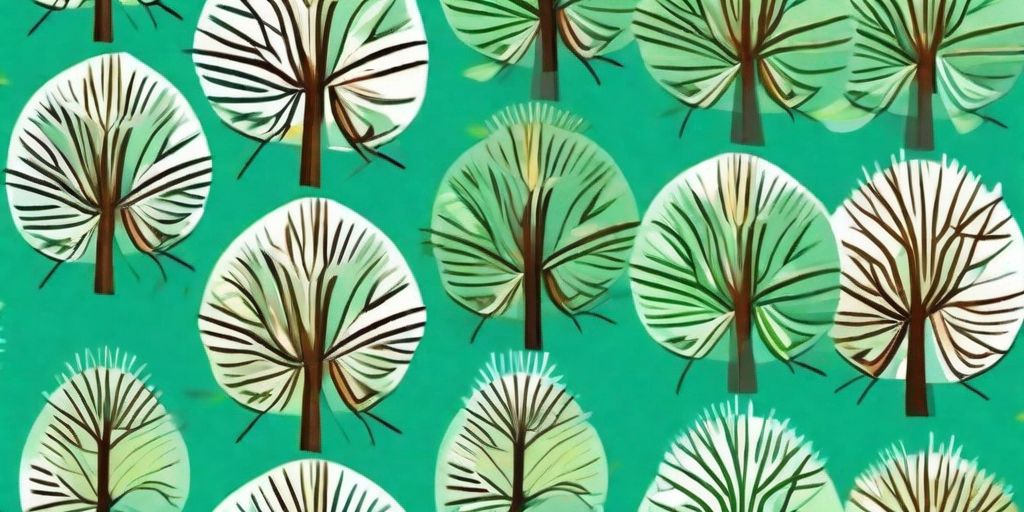
Chestnut trees, those shady characters with a nutty personality, are more than just a pretty face in the arboreal world. They're the life of the party in the forest, providing food, shelter, and a whole lot of charm. So, let's take a stroll through the woods and get to know these magnificent trees a little better.
The Chestnut Tree: A Brief Introduction
First things first, let's get the formalities out of the way. The chestnut tree, belonging to the genus Castanea, is a deciduous tree known for its stunning foliage and, of course, its delicious nuts. There are four main species of chestnut trees: American, European, Chinese, and Japanese. Each has its own unique characteristics, but they all share a love for well-drained soil and sunny spots.
These trees are quite the social butterflies, growing up to 100 feet tall and spreading their branches wide. They're not the type to shy away from attention, especially in the fall when their leaves turn a vibrant array of reds, oranges, and yellows. It's like they're throwing their own little autumnal festival.
The Benefits of Chestnut Trees
Now that we've made our introductions, let's delve into the many benefits that chestnut trees bring to the table, or rather, the forest.
Ecological Benefits
Chestnut trees are the epitome of generosity. They provide food for a variety of wildlife, including squirrels, deer, and birds. Their broad canopy offers shelter and nesting sites for our feathered friends. Plus, their fallen leaves add nutrients back into the soil, making them the perfect eco-friendly neighbor.
They're also quite the air purifiers. Like all trees, chestnuts absorb carbon dioxide and release oxygen, helping to combat climate change. So, next time you take a deep breath of fresh air in the forest, you might want to thank a chestnut tree.
Economic Benefits
But chestnut trees aren't just ecological superheroes; they're also economic powerhouses. Their nuts are a valuable commodity, used in everything from cooking to brewing. Plus, their wood is highly prized for its durability and resistance to decay, making it ideal for furniture, fencing, and flooring.
And let's not forget about the tourism potential. Who wouldn't want to visit a beautiful chestnut forest in the fall? It's like stepping into a real-life painting.
How to Identify a Chestnut Tree
Now that we've sung the praises of the chestnut tree, you're probably eager to identify one on your next woodland walk. Well, fear not, we've got you covered.
Look at the Leaves
Chestnut leaves are distinctive, with a long, oblong shape and serrated edges. They're also arranged in an alternate pattern on the branches. In the fall, they put on a spectacular color show, turning from green to a dazzling array of autumn hues.
But remember, not all that glitters is gold. There are a few other trees, like the horse chestnut and the buckeye, that have similar leaves but are not true chestnuts. So, you'll need to look for other clues as well.
Check the Bark
The bark of a chestnut tree is another telltale sign. It's typically grey or brown with deep furrows and a rough texture. As the tree ages, the bark becomes more rugged and the furrows more pronounced.
Again, don't be fooled by imposters. The horse chestnut, for example, has smooth, grey bark that's quite different from the true chestnut.
Examine the Nuts
Finally, the nuts. True chestnuts are enclosed in a spiky burr that splits open when the nuts are ripe. The nuts themselves are shiny brown and have a pointed tip. They're also delicious, but that's a test you'll have to conduct yourself.
FAQs about Chestnut Trees
- How long does a chestnut tree live?
- A healthy chestnut tree can live for several hundred years. Talk about longevity!
- Are chestnuts and horse chestnuts the same?
- No, they're different species. True chestnuts are edible, while horse chestnuts are not.
- Can I grow a chestnut tree in my backyard?
- Yes, as long as you have well-drained soil and plenty of sunlight. But remember, these trees can get quite large, so make sure you have enough space.
Conclusion
So there you have it, a comprehensive guide to the shady and nutty world of chestnut trees. These trees are not just beautiful to look at, but they also provide numerous ecological and economic benefits. Plus, they give us delicious nuts to roast on an open fire during the holiday season. What's not to love?
So, next time you're out and about, take a moment to appreciate these arboreal wonders. And who knows, you might just find yourself going nuts for chestnut trees.











